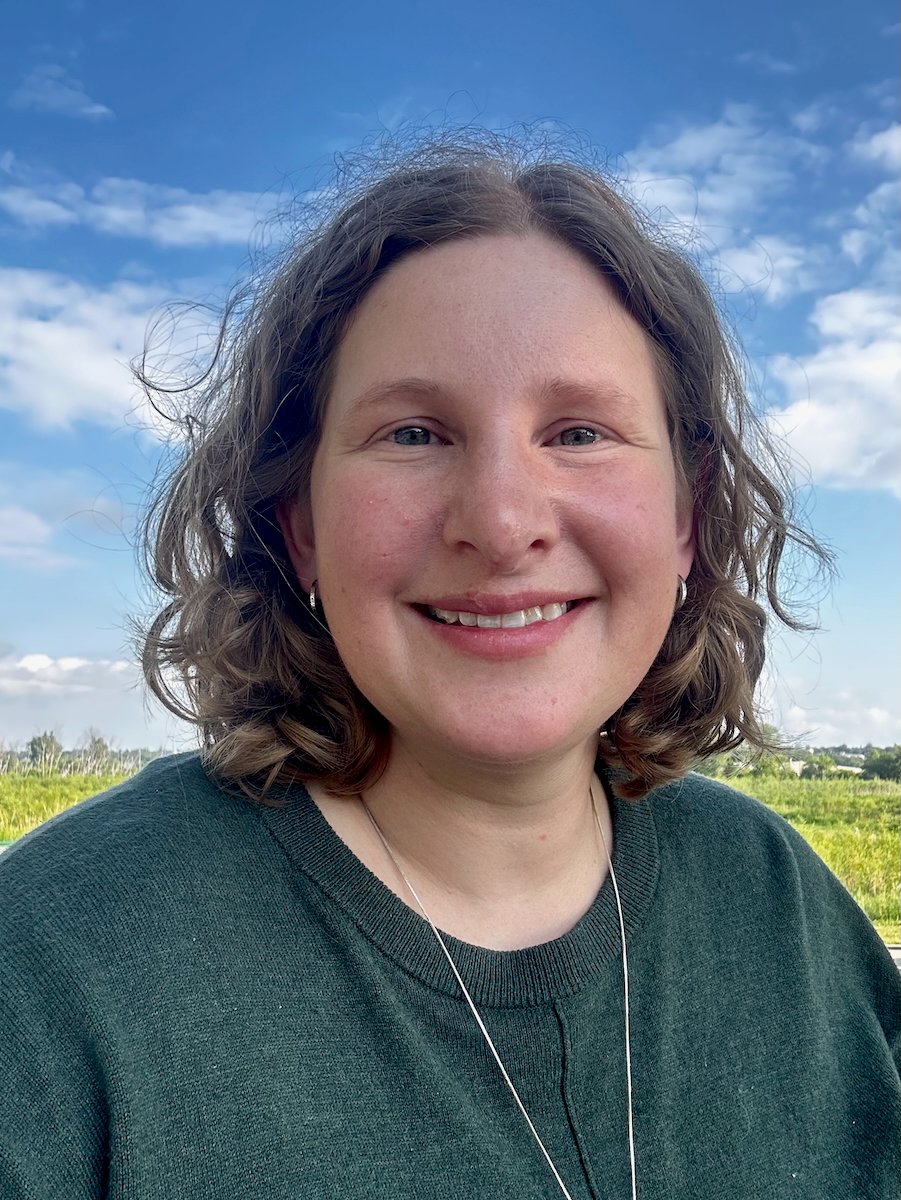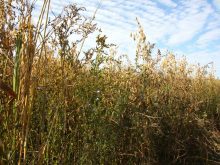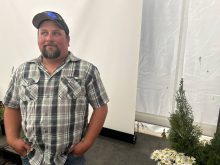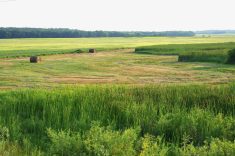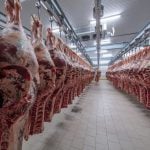The goal was to capture the best of both worlds — a productive agriculture landscape while protecting the surrounding natural ecosystem.
The unlikely scene is 13 acres of potato land, owned by Swan Lake First Nation (SLFN), and rented out to a neighbouring farmer.
The land has newly installed tile drainage to manage water and boost productivity. But that sort of run-off is often blamed for flooding and damage to the downstream ecosystem with nutrient loading.
So, a landowner-driven, multi-stakeholder research initiative — Living Labs — Eastern Prairie — added several mitigation measures including a small dam that controls outflows and a vegetation buffer which is meant to naturally treat the water, before it trickles downstream to Swan Lake itself.
Read Also

Manitoba Ag Days 2026: Local businesses gear up for Brandon farm show
Most of agriculture is seemingly at Manitoba Ag Days each January: Manitoba agribusinesses and farm groups look forward to connecting with farmers at the 2026 show.
The idea, according to project designers, is to develop and test tile drainage management in a way that leads both to better production in the field, and better control of water quality and flow off it.
It involved serious earthworks — the installation of new infrastructure and practices sometimes unpopular with farmers begrudging the loss of cropland in favour of water management use.
But in this case, said Eric Cameron, manager of the Swan Lake First Nation lands department, there was no such point of conflict. Under the project design, the renter did not, in fact, lose large swaths of field, while improvements to drainage promised to pad their yearly yield.
“Everybody thought it was a good idea,” Cameron said.
It is a major project, but far from the only foray into applied research on SLFN.
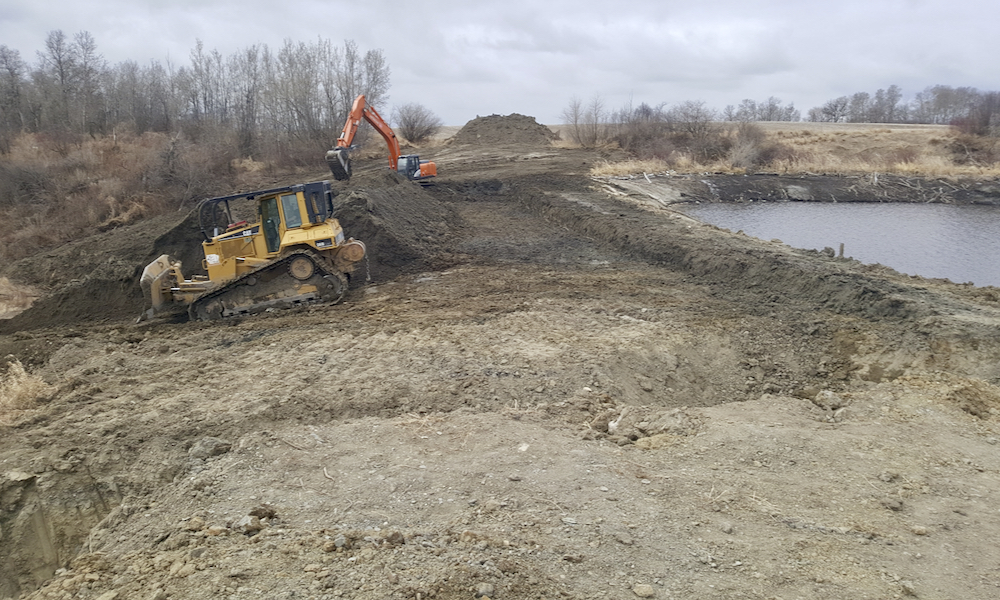
It’s also emblematic of a deepened partnership between the First Nation and groups like Living Labs.
That endeavour involves multiple federal and provincial departments, several conservation groups, four of the province’s watershed districts, including the Swan Lake Watershed, where SLFN is one of the major landowners.
Now several years into the initiative, the list of joint projects on the SLFN reserve has grown into a long one, including on-the-ground construction of retention ponds and planting riparian buffers and ongoing studies into biodiversity and soil health.
Why it matters: Swan Lake First Nation has become one of the driving forces behind a wide-reaching agriculture sustainability project.
Building a foundation
Getting to this point was a long process. Participants say it took years to lay the groundwork and build the necessary relationships.
Cameron was one of the early participants in that effort, building on SLFN’s long-standing interest in water management. The early work began with what was then the local conservation district (now the Pembina Valley Watershed District).
Cameron spent years working on issues like Swan Lake’s water levels alongside people like Cliff Greenfield, the executive director of the conservation district, a role he continues to hold in the new watershed district.
Through that connection, Greenfield later introduced Cameron to Agriculture and Agri-Food Canada (AAFC) researcher Jason Vanrobaeys, one of the early Living Labs participants in Manitoba.
The result, according to Living Labs biodiversity lead Melanie Dubois (also from AAFC) was that Vanrobaeys and his team were invited in on a number of projects on the First Nation, connections that later evolved into the current relationship between the SLFN and Living Labs.
According to Cameron, SLFN drew on expertise from Vanrobaeys and the conservation district while laying plans for a drainage system in the community.
“It gradually grew to different projects that were happening on the reserve here that, from my perspective, I didn’t know what to do,” Cameron said. “I’m not an engineer… so they gave us that advice and we’ve been working with them now for about three or four years.”
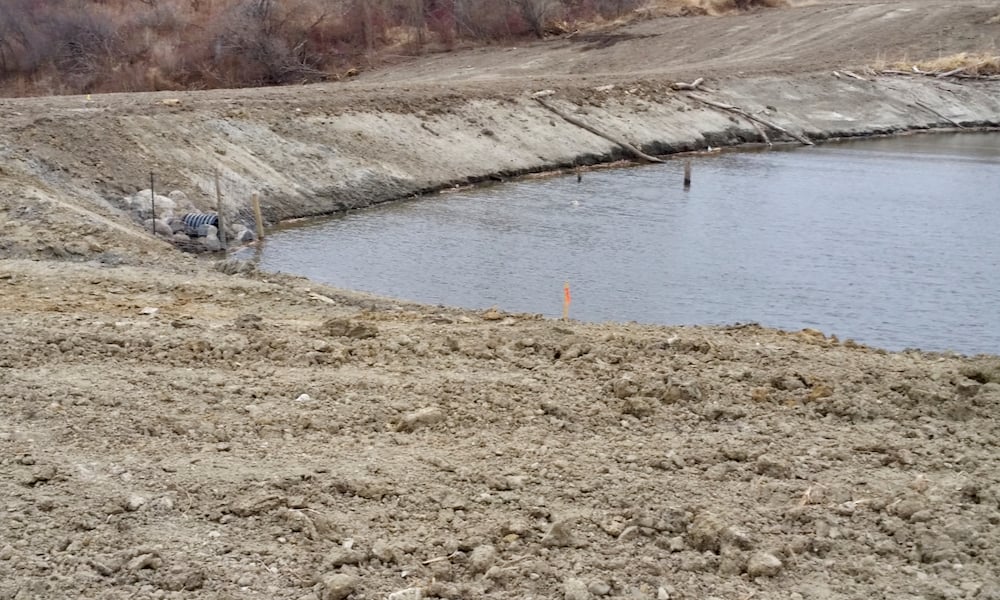
It has been a much-appreciated foundation for the federal initiative, Dubois said. With SLFN, AAFC and the local watershed already working together, many things have been achieved relatively quickly.
“These relationships take a really long time to grow,” she said. “I think that we got a really, solid head start.”
It allowed for a level of trust and communication that otherwise would still be developing, and enabled faster progress.
Dubois also noted the structure of Living Labs is conducive to wide collaboration. Engagement with many partners helps dodge some typical issues with the funding cycle that can impede efforts to grow relationships, she said, while those wide-branching partnerships can snowball, with contacts reaching out to their own contacts, to create an ever-expanding web.
Unlocking doors
Living Labs “really enabled us to get to know our neighbours,” Greenfield said.
Despite being a major landowner in the region, the First Nation was also a largely federal entity, making co-operation difficult prior to the Watershed District Act last year, he said.
On Jan. 1, 2020, the act merged Manitoba’s previous 18 conservation districts into 14 watershed districts, with an enhanced focus on water management. Among other things, the act also opened the door for wider collaboration between watersheds and non-municipal entities, like the Swan Lake First Nation.
The new legislative landscape also made more fertile ground for initiatives like Living Labs, which hang their mandate on widespread partnerships.
Manitoba is one of two provinces (along with P.E.I.) to pilot the federal government’s Living Labs Initiative. The idea, according to Greenfield, is to develop and test management practices in the real world, with “on-the-farm actions and on-the-farm problems.”
That initiative was announced in 2019, along with a $10-million commitment in federal funds. In Manitoba four sub-watersheds were earmarked for projects, “kind of representing the different topography of Manitoba,” Greenfield said.
Along with Upper Oak River Watershed in northwestern Manitoba, North Shannon Creek Watershed in central Manitoba, and Main Drain Watershed in southeastern Manitoba, the list included the Swan Lake Watershed, an area about 30 to 40 per cent held by SLFN.
Picking priorities
The announcements were followed by a round of consultation and public meetings, with landowners outlining farm operation details, concerns or feedback on what they might like to see out of the program. From there, Greenfield said, scientists teased out individual projects on individual farms.
“The first part of the project or discussion was kind of outlining the intent of Living Labs and looking at land management and BMPs in real-life situations, and then working with Swan Lake First Nation on looking at their whole land base and how it’s utilized and some of the issues, both for farming and wildlife and habitat and pasture management and those kinds of things,” said Steve Sager, one of the AAFC researchers on the Living Labs team.
Many of those issues related to water and water quality.
Water quality on the Pembina River was one major concern, as were issues around Swan Lake itself and the health of the regional aquifer. There were concerns over algae and upstream flooding, over fish and wildlife habitat.
The first months saw ongoing discussions with Cameron’s department, Swan Lake First Nation chief, council, elders and community, Sager said.
The First Nation’s voice has been well heard throughout the project, according to Cameron.
Getting to work
First on the list was the renovation of an old dam, built in the ’70s to facilitate irrigation for potatoes and now losing integrity.
“It started to erode,” Cameron said. “It was going around the culverts and so we figured it might burst.”
That control structure was revamped and lowered, and the earthworks revegetated with an eye to biodiversity.
The project was followed by a retention pond upstream of the lake, meant to help filter sediment and leached nutrients and to preserve water quality. Projects soon multiplied at that location, expanding to tile drainage, revamped vegetation, beneficial insects and the addition of a wetland terrace (described as a flat, rice paddy-like area along the retention pond, which hopes to catch excess water and nutrients that would otherwise drain downstream).
“A lot of our earth-moving projects need to be revegetated anyway,” Dubois said.
“Oftentimes when you’re revegetating any of those earthworks, it’s whatever’s cheapest, whatever they have on hand — generally grasses, maybe more agronomic species, that kind of stuff,” she said. “We put a lot into selecting more native species and ones that will have more benefits for pollinators, beneficial insects.”
Among the First Nation’s priorities, the community had called for the restoration of certain culturally important medicinal plants such as cedar, willow or sweet flag — a moisture-loving plant that Living Labs hopes to keep in mind when it comes to wetland restoration.
“There are certain areas where they used to grow, but for some reason they kind of disappeared,” Cameron said, noting that some of those plant populations were disrupted by brush clearing or exposure to farm inputs.
“What we’re trying to do (with) that dam and retention pond, we’re trying to grow some of these medicines back in those areas,” he said.
Elsewhere, the First Nation has its crosshairs on grazing management and biodiversity. That project looks at restoring grazing land for bison and has a focus on cover crops and carbon sequestration.
The resulting assessments gave the First Nation warning that some grazing land was quickly losing viability, Cameron said.
“What we’re doing is we picked another set of land adjacent to the current pasture that we’re building another pasture there to move them over,” he said. “And we’re going to reseed and rejuvenate those two pastures that we have at this time.”
Other projects, not on the reserve itself, have also played into the First Nation’s priorities.
In one case, Greenfield said, the watershed district has a nearly completed project with a farmer upstream that could potentially address issues like controlling flood peaks, limiting erosion and improving wetland health on the reserve.
“Those projects are happening sort of throughout that sub-watershed,” he said, noting that the “one-two punch” of multiple projects on the same waterway can mean a significant impact throughout the region.
How it’s going
There have been few scientific results so far. Many projects that will eventually yield empirical data have only got their feet under them this past year, Greenfield said, although there has been good information on how land use impacts pollinators.
And while Sager says much of the work will now turn to monitoring, data collection and outreach events like field days, there are still some projects on the docket.
One marsh on SLFN is still set for revegetation after changes to culvert infrastructure have seen upland vegetation start to encroach, Dubois noted.
Another project will carry on the tile drainage theme at the main site, with a planned saturated buffer to manage flow off the field.
Despite the wait for scientific results, however, Dubois also argued that the Living Labs team has learned “quite a bit, going forward,” when it comes to partnership.
“I certainly feel that the partnership and the relationship that we have with Swan (Lake First Nation) are definitely going to outlive Living Labs,” she said. “The approach is going to evolve into agro-climate solutions and I think that the basic underpinnings of Living Labs and the approach with co-development and multiple partners is going to continue. It’s long term.”

